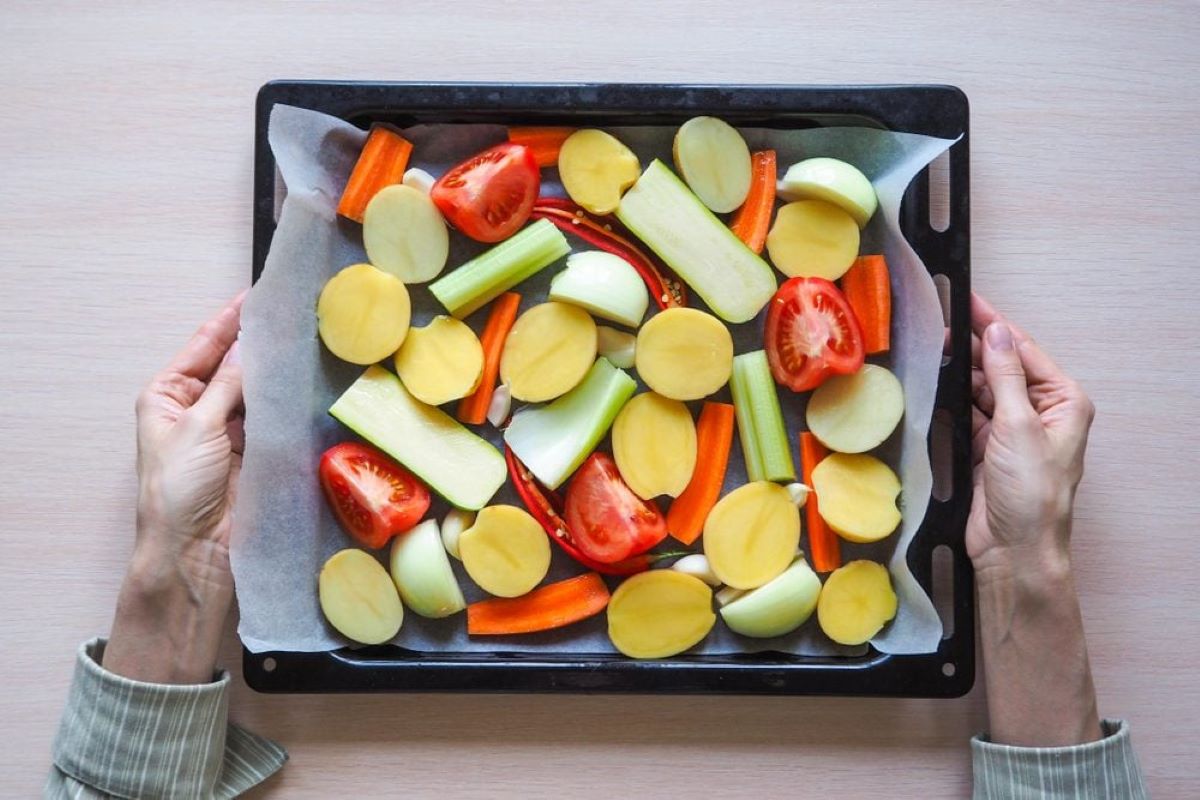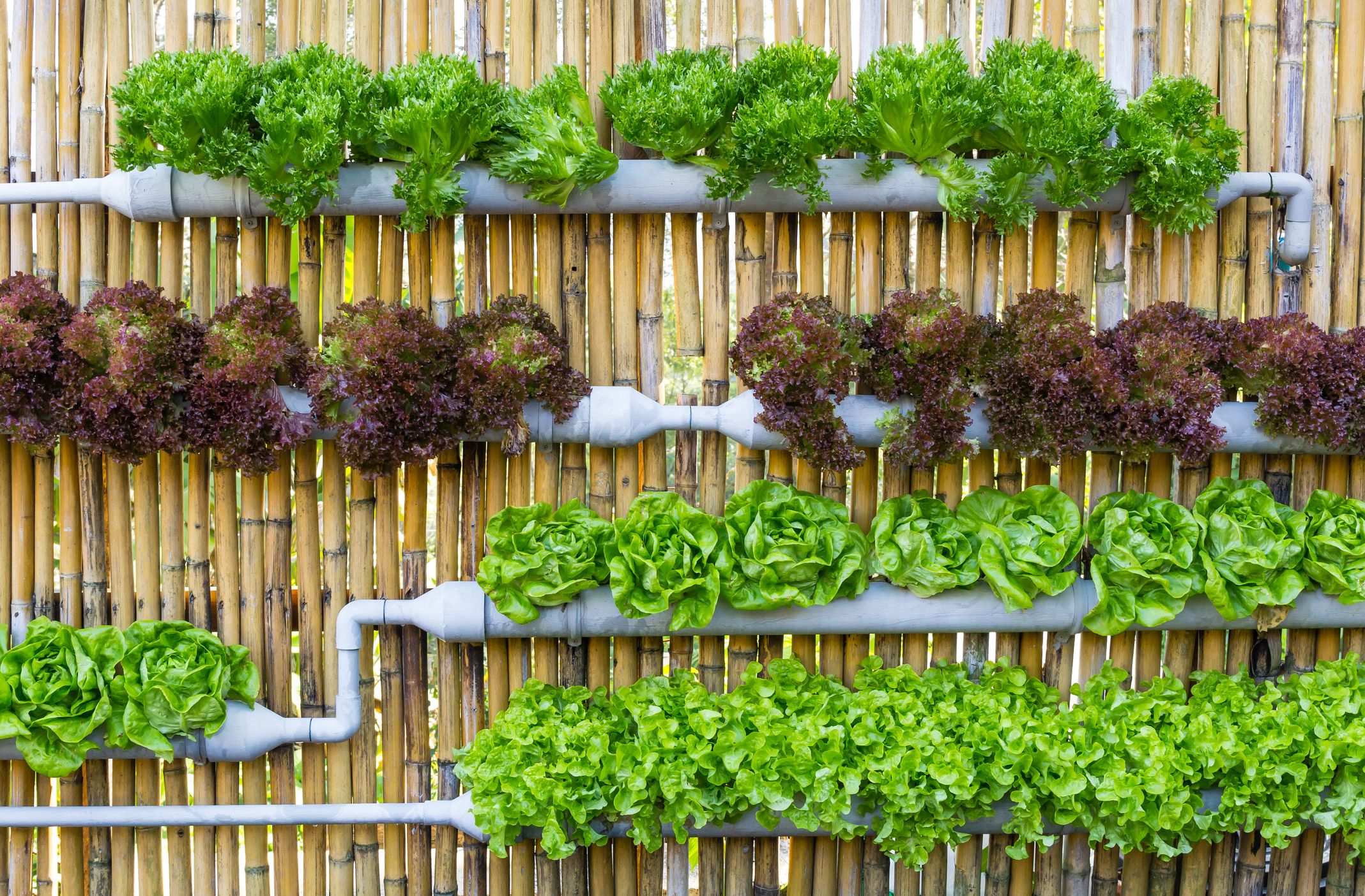Home>Gardening News and Trends>Latest News>How To Make An Omelette With Vegetables


Latest News
How To Make An Omelette With Vegetables
Modified: January 22, 2024
Learn the latest news on how to make a delicious omelette with fresh vegetables. Step-by-step guide and expert tips for a tasty and healthy breakfast option.
(Many of the links in this article redirect to a specific reviewed product. Your purchase of these products through affiliate links helps to generate commission for Chicagolandgardening.com, at no extra cost. Learn more)
Table of Contents
Introduction
Welcome to the world of delicious and nutritious omelettes made with flavorful vegetables! Omelettes are a versatile and satisfying dish that can be enjoyed for breakfast, lunch, or dinner. By adding vegetables to your omelette, you not only enhance its taste but also pack it with essential vitamins and minerals.
Whether you’re a seasoned cook or a beginner in the kitchen, making an omelette with vegetables is a simple and rewarding process. In this article, we will guide you through the steps involved in creating a tasty and wholesome vegetable omelette that will delight your taste buds and nourish your body.
But before we dive into the cooking process, let’s talk about the importance of choosing and preparing the right vegetables. By selecting fresh and vibrant vegetables, you can elevate the flavor and nutritional value of your omelette. From crispy bell peppers to tender spinach leaves, the possibilities are endless.
Are you ready to embark on this culinary adventure? Let’s get started by exploring the world of vegetables for your omelette!
Choosing and Preparing Vegetables
The first step in making a delectable vegetable omelette is selecting the right vegetables. You have a wide array of choices, ranging from crunchy bell peppers to earthy mushrooms and leafy greens. The key is to choose vegetables that complement each other in terms of taste and texture.
Here are a few popular vegetables that work well in an omelette:
- Bell peppers: Whether red, green, or yellow, bell peppers add a vibrant crunch to your omelette.
- Tomatoes: Juicy and tangy, tomatoes can bring a pleasant acidity to balance out the flavors.
- Onions: Sautéed onions give your omelette a hint of sweetness and a delightful aroma.
- Mushrooms: Rich and meaty, mushrooms lend a satisfying umami flavor to your omelette.
- Spinach: Packed with nutrients, spinach adds a vibrant green color and a delicate taste.
Once you have chosen your vegetables, it’s time to prepare them for your omelette. Start by washing the vegetables thoroughly to remove any dirt or impurities. Then, depending on the vegetable, you can slice, dice, or chop them into bite-sized pieces.
If you prefer your vegetables to be softer in your omelette, consider sautéing them beforehand. This will enhance their flavors and make them easier to incorporate into the omelette. On the other hand, if you enjoy a crispier texture, you can add the vegetables directly to the omelette without pre-cooking.
Incorporating a variety of colors and textures in your vegetable selection will not only make your omelette visually appealing but also provide a balanced and nutritious meal. Experiment with different combinations to discover your favorite vegetable medley.
Now that you have selected and prepared your vegetables, let’s move on to the next step: preparing the egg mixture for your vegetable omelette.
Preparing the Egg Mixture
The egg mixture is the foundation of a delicious vegetable omelette. It acts as a binder to hold everything together and adds a rich and creamy texture to the dish. Preparing the egg mixture is an important step in achieving the perfect omelette.
To start, crack the desired number of eggs into a bowl. Generally, two to three eggs are enough for a single omelette. Whisk the eggs vigorously with a fork or whisk until the yolks and egg whites are well combined. This will create a light and fluffy texture.
At this point, you can add a splash of milk or cream to the egg mixture if you prefer a creamier omelette. This step is optional and can be adjusted based on personal preference. Adding dairy also helps to make the eggs tender and prevents them from becoming rubbery.
Next, season the egg mixture with salt, pepper, and any other desired herbs and spices. This is where you can get creative and add flavors that complement your vegetables. Common herbs and spices to consider include oregano, thyme, basil, or a pinch of cayenne pepper for some heat.
Gently whisk the seasoning into the egg mixture, making sure everything is evenly distributed. Taste a small amount of the mixture to ensure the seasoning is to your liking, adjusting as needed. Remember, the egg mixture needs to be well-seasoned as it will be the base flavor of the omelette.
Now that your egg mixture is ready, it’s time to move on to the next step: cooking the vegetables for your vegetable omelette.
Cooking the Vegetables
Once your vegetables are prepped and the egg mixture is ready, it’s time to cook the vegetables for your vegetable omelette. There are a few different methods you can use to cook the vegetables, depending on your preferences and the desired texture.
If you prefer your vegetables to be soft and tender, sautéing is a great option. Heat a small amount of oil or melted butter in a frying pan over medium heat. Add the vegetables and cook them until they are slightly softened and have a vibrant color. Make sure to stir them occasionally to prevent sticking or burning.
If you enjoy a crunchier texture, you can choose to lightly steam or blanch the vegetables. This method helps to retain their crispness while still cooking them enough to be tender. Fill a pot with a small amount of water and bring it to a boil. Place the vegetables in a steamer basket or submerge them in the boiling water for a few minutes until they are just cooked.
Another option is roasting the vegetables in the oven. Preheat the oven to a moderate temperature, around 400°F (200°C). Toss the vegetables with a drizzle of oil, season them with salt, pepper, and any desired herbs or spices, and spread them out on a baking sheet. Roast them in the oven for 15-20 minutes or until they are golden and slightly caramelized.
No matter which method you choose, make sure not to overcook the vegetables. They should still have a bit of bite and retain their vibrant colors and flavors. Cooking the vegetables beforehand helps to bring out their natural sweetness and enhances their overall taste.
Now that your vegetables are cooked to perfection, it’s time to add them to the egg mixture and create your vegetable omelette.
Adding the Egg Mixture
With your cooked vegetables ready, it’s time to incorporate them into the egg mixture to create your delicious vegetable omelette. This step is where the magic happens and all the flavors come together.
First, heat a non-stick frying pan over medium heat and add a small amount of oil or butter to prevent sticking. Let the oil or butter heat up for a minute or two until it shimmers or foams slightly.
Once the pan is hot, pour the prepared egg mixture into the pan, making sure it spreads evenly. Tilt the pan slightly to ensure the egg mixture covers the entire surface. Allow the eggs to cook undisturbed for a minute or until the edges start to set.
Next, carefully spoon the cooked vegetables over one half of the egg mixture in the pan. Spread them out evenly, ensuring they cover the entire side. Leave some space around the edges for easier folding later.
Now comes the fun part – folding the omelette! Using a spatula, gently lift the unfilled side of the omelette and fold it over the side with the vegetables. Press down lightly to seal the omelette shut and continue cooking for another minute or until the eggs are fully cooked through.
For those who prefer a more well-done omelette, you can cook it for a little longer, making sure to flip it gently midway to cook the other side evenly. However, be mindful not to overcook the omelette, as it may become tough and dry.
And there you have it – a beautifully folded omelette filled with flavorful vegetables! The combination of the fluffy eggs and the tender, sautéed or roasted vegetables creates a delicious and nutritious meal.
Now that your omelette is ready, it’s time to move on to the final step: flipping and finishing the omelette.
Flipping and Finishing the Omelette
Once your omelette is folded and cooked on one side, it’s time to flip it and finish cooking it to perfection. This step requires a bit of finesse, but with practice, you’ll become a pro at flipping omelettes in no time.
First, check if the omelette is set and slightly golden on the bottom. Gently slide a spatula under the omelette to ensure it isn’t sticking to the pan. If it moves freely, you’re ready to flip!
Now, comes the tricky part. Place a large plate upside down over the pan, making sure it completely covers the pan’s surface. With one hand on the plate and the other on the pan’s handle, quickly and confidently flip the pan upside down. The omelette should now be on the plate, cooked side up.
Next, carefully slide the omelette back into the pan, uncooked side down. Adjust its position if needed and continue cooking for a minute or so until the second side is cooked and slightly golden.
Once the omelette is fully cooked, gently slide it onto a serving plate. Now it’s time to decide how to present your masterpiece – you can serve it as is, or you can add some final touches to take it to the next level.
If you want to add a touch of elegance, you can sprinkle some freshly grated cheese over the omelette while it’s still hot. The heat of the omelette will melt the cheese, creating a gooey and delicious topping.
For some additional freshness and aroma, you can garnish your omelette with some freshly chopped herbs, such as parsley or chives. Their vibrant colors and flavors will elevate the overall presentation and taste.
And there you have it – a perfectly flipped and beautifully finished vegetable omelette that is ready to be served and enjoyed!
Now that your omelette is complete, it’s time to move on to the final section: serving and enjoying your delicious creation.
Serving and Enjoying
Congratulations! You have successfully created a mouthwatering vegetable omelette. Now, it’s time to savor the fruits of your labor and enjoy every flavorful bite.
There are various ways to serve and enjoy your vegetable omelette. You can serve it as a standalone dish, accompanied by a side salad or some toast. Alternatively, you can pair it with other breakfast staples like crispy bacon or sausages for a heartier meal.
When serving the omelette, you can choose to cut it into wedges or fold it into a half-moon shape. Sprinkle some freshly chopped herbs on top for an added burst of flavor and a touch of elegance.
The beauty of vegetable omelettes is their versatility. You can customize them to your liking by adding extra toppings or fillings. Consider adding some grated cheese, sliced avocado, or a dollop of sour cream for some extra richness and indulgence.
Don’t forget to savor each bite, appreciating the harmonious blend of flavors from the vegetables and the fluffy eggs. Take a moment to admire the vibrant colors and relish the wholesome goodness.
Remember, omelettes are not limited to breakfast; they make a satisfying and nutritious meal at any time of the day. You can enjoy a vegetable omelette for a quick and wholesome lunch or a light dinner option.
As you savor your vegetable omelette, take note of the textures, the aromas, and the burst of flavors in every mouthful. Appreciate the effort you put into selecting and preparing the vegetables, as well as creating the perfect egg mixture.
Now that you know how to make an omelette with vegetables, feel free to experiment with different combinations of vegetables and flavors. Let your creativity in the kitchen shine, and don’t be afraid to try new ingredients to create unique and exciting variations.
So, gather your favorite vegetables, crack some eggs, and let your culinary journey begin. Enjoy the satisfaction of making a wholesome and delicious vegetable omelette that will leave you wanting more!







